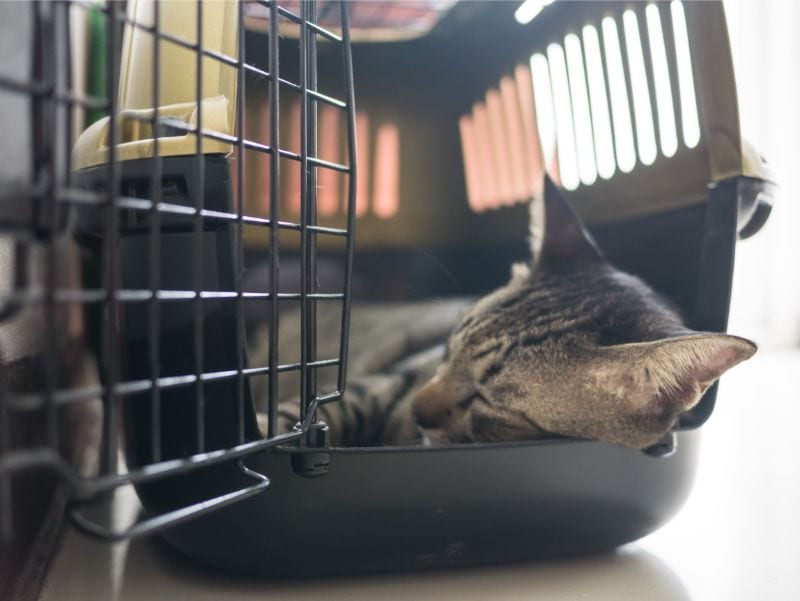Should You Crate Train Your Cat? The Answer May Surprise You

For a species that loves cardboard boxes, it’s odd that cats generally loathe crates or travel kennels. Perhaps it’s the feeling of being trapped, an alarming, sudden loss of control, or an earlier travel experience that was unpleasant, but cats are notoriously difficult to get inside their crates.
However, with a proper and patient approach, you can absolutely crate train your cat – and the payoff may resonate for years to come.
It’s Cat-a-Logical
High numbers of cats miss out on routine wellness care and disease prevention simply because it’s impossible to get them into the car.
When a cat’s crate becomes a happy, relaxing place to retreat to, travel and moving are easily achieved. What’s more, if you ever have to leave your home in an emergency situation, your cat can remain safe in their crate and ready to evacuate with you.
Getting Ready
Many people familiar with feline behavior may be doubtful that their cat will accept crate training. Some cats fear the car, possible animal encounters, and even medical attention – especially if they’ve had negative experiences in their crates.
When you crate train your cat, you end up changing their entire perception of the crate. Instead of fear, doubt, or worry your cat will begin to see it as another place to sleep, groom, and observe the household.
Establishing Positive Associations
To start the process of crate training you’ll need a crate or travel kennel that is big enough for your cat to stand up inside and turn around in. Place the crate in an area that is away from the hustle and bustle, but not too far removed. A sunny spot that’s centrally located (yet out of the way of heavy foot traffic) will do the trick.
Line the bottom of the crate with super soft, cuddly blankets and pillows. Place a few toys and treats inside the crate. It’s important to use a soft, soothing voice. Never scold or punish your cat for being wary of the crate, and never force them inside it.
Troubleshooting
If your cat’s crate can be taken apart, remove the top upper shell. Encourage your cat to use the bottom shell as a sleeping spot. Feliway can be sprayed on and around the crate to soothe any nerves.
Over time, your cat may display comfort while hanging out on the bottom shell (kneading, self-grooming, sleeping). This is when you can install the top half. Don’t add the door until your cat is truly ready to travel in their crate.Try not to disturb your cat once they decide to rest inside their crate.
If all else fails, these ideas may help crate train your cat:
- Move the crate location. Remember to secure the crate if it’s on another surface besides the floor.
- Offer their meals next to the crate. Once they readily take their meals there you can move their bowl/dish inside the crate.
Crate Train Your Cat
It may take some time, but you should be able to eventually walk around with them while inside the crate. After they demonstrate a certain level of acceptance, try to drive short distances before increasing travel.
If our veterinarians and veterinary staff can assist you further, please let us know. Since wellness care and disease prevention are the foundation of your cat’s health, we hope that you’re able to crate train your cat soon!

